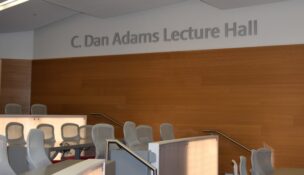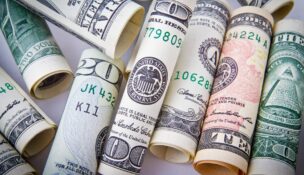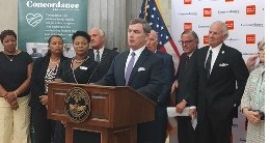Schutte: Economy is acting normal despite fears
Staff //December 5, 2018//
The current economy is moving quickly and inflation is low, but inflation pressures exist, according to Brent Schutte, chief investment strategist for Northwestern Mutual. He said fears in the economy include tariffs and decisions from the Federal Reserve.
“Tariffs aren’t big enough to take on the market,” Schutte said during a recent discussion in Greenville about the economy. “I don’t believe that presidents are an absolute positive or negative to the overall macroeconomic outlook. The U.S. economy is $20 trillion big with lots of individual actors acting on their own behalf in their own best interest.”
Schutte said tariffs were a global concern at the beginning of the year “because we were basically renegotiating with every country.” He said the United States-Mexico-Canada Agreement, or NAFTA 2.0, took $1.1 trillion worth of tariffs off the table. The U.S. and the Euro Zone negotiated a framework going forward that took $435 billion in tariffs off the table, he said, along with a $150 billion deal with South Korea.
“The crosshairs are left on one country — China,” Schutte said. “China trade with the U.S. is $630 billion or so. I don’t think it’s big enough to take on the macroeconomy. I don’t think it’s big enough by any means to take on the U.S.”
Schutte said he has been in his line of work for quite some time, and that each election he gets calls from certain subsets of clients wanting out of the market.
“My point is that the market and economy are higher. People make plans that last longer than four years, so don’t overemphasize politics in your decision making,” he said, adding that it is “a factor we look at, but not the primary one.”
Schutte also believes the Federal Reserve wants the economy to continue to “run hot.” He said current economic growth is very strong, citing last quarter’s GDP of 3.5% and the 4.2% the quarter before that.
“You don’t just wake up from that strong of growth the next morning and have a recession,” he said. “I think of the economy like a large oil tanker. It doesn’t go very fast, but once you thrust it into motion, it takes a big force to stop it or push it back, which is what a recession is.”
There are three things to watch for as an economic cycle ends, Schutte said.
First, the U.S. economy runs out of slack causing the No. 2 to happen, rising inflation, which causes No. 3, the Federal Reserve to aggressively raise interest rates.
Where are we right now?
“The unemployment rate is 3.7%, and when I travel around the biggest thing I hear is that it’s hard to find workers, but somehow every single month the jobs report shows that we’re hiring over 200,000 people per month,” he said.
To be counted in that 3.7% unemployment rate, which is the lowest since the late 19 60s Schutte said, you have to be looking for a job.
“What you’re seeing happening is that people who aren’t looking for a job are on the sidelines one month then coming back in the next month and finding employment right away,” he said. “The biggest group where this is happening is in the 25- to 54-year-old age demographic. The labor force participation rate among this group was 81.8%. That’s how many people were working or looking for work.”
Schutte said that in past economic cycles that number has gotten to 84% to 84.5%.
“I think we have been labor slack. That shows up in No. 2, inflation has risen, but it’s only risen to 2%,” he added. “So I think it will continue to climb, but I think we have time left before it causes No. 3, the Federal Reserve to act.”
Schutte said that anyone who studies economics will see that the current economic cycle will rise and fall like all the others.
“It’s just taking longer to get to each one of those points because the scars of the Great Recession were so deep that consumers behaved more conservatively and business owners behaved more cautiously,” he said. “And from a political perspective, right after the Great Recession, everything was done to make sure it didn’t happen again.”
In the U.S., from 1945 to 2008, in every single quarter except two, consumer debt, in aggregate, went up, Schutte said. And between 2008 and 2016, the consumer added no debt to the balance sheet while adding to their savings.
“The consumer debt-to-asset level right now is at levels it first was in 1985,” Schutte said. “When you ask consumers why they feel comfortable, why they feel good about their debt-to-asset levels, they say because they’ve paid down their debt and increased their savings. So a guy like me, who draws correlations, says if they feel comfortable with their debt-to-asset level, when they get pay increases, they will spend it.”
Schutte said that we are getting closer to the end of the economic cycle, but we are not there yet. And when the Federal Reserve raises interest rates, “they’re trying to moderate your behavior.”
“When they raise rates, they’re raising the price of risk. This means that as we move toward the end of the cycle, volatility will tick higher. This happens every time,” he said.
F















